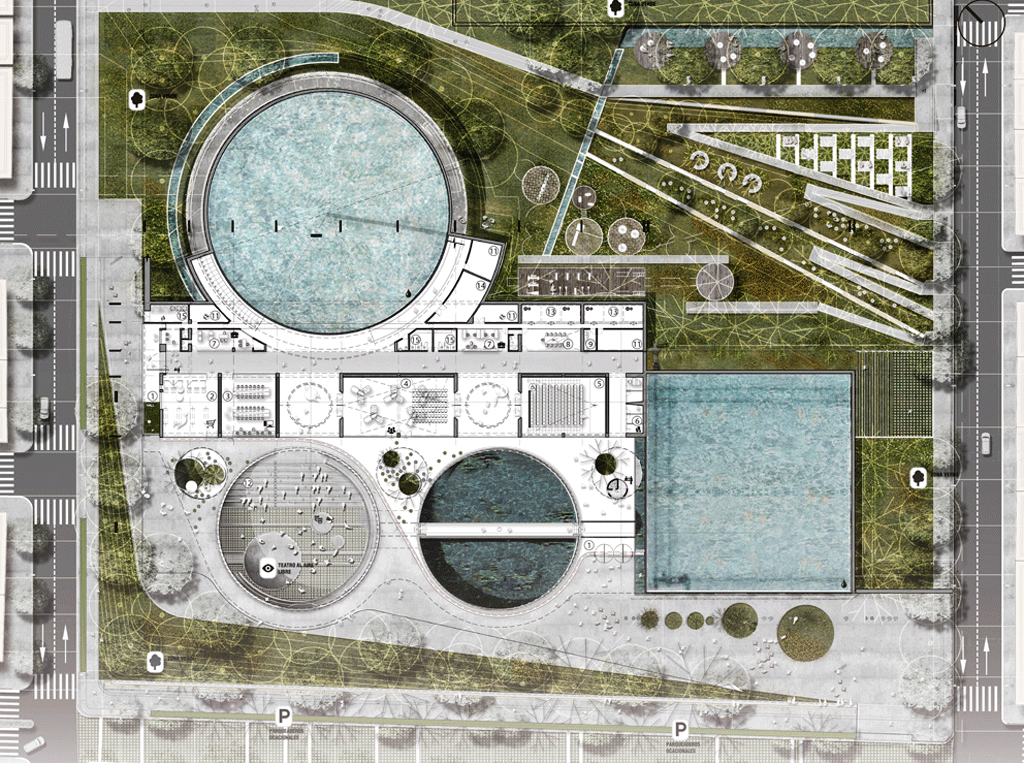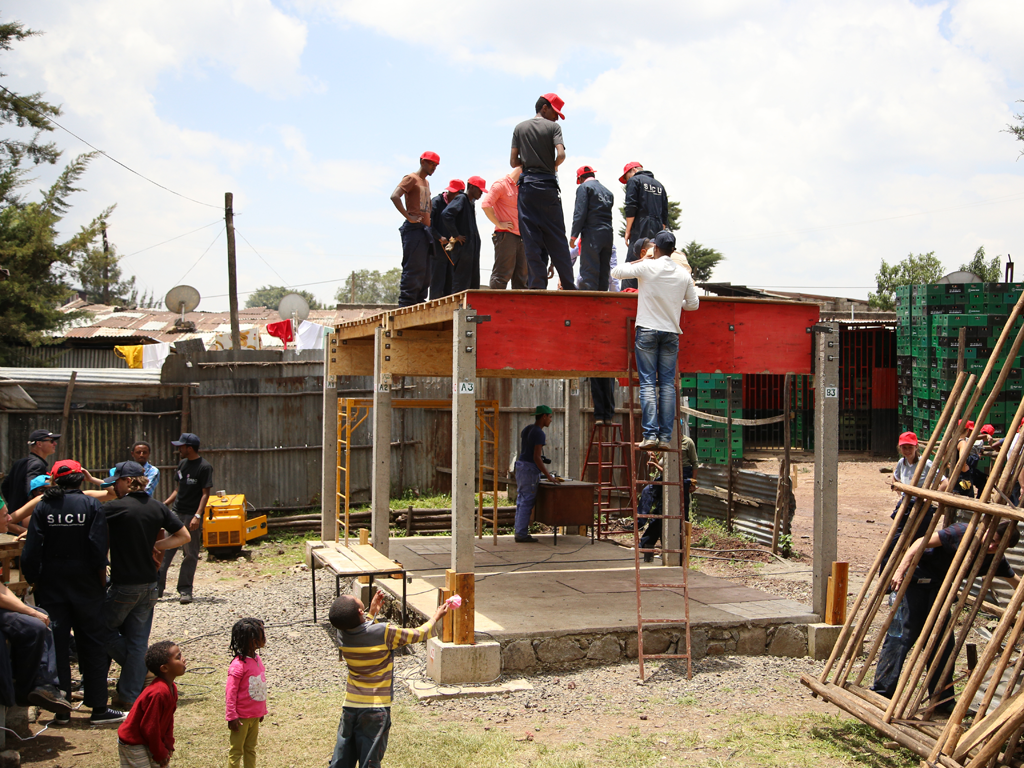4e édition des Holcim Global Awards
Le Trophée d’Or des 4ème Global Holcim Awards pour la construction durable semble récompenser une décennie de développement qui a fait de Medellín un modèle d’intervention architecturale intelligente. La récompense a en effet été attribuée à un projet visant à transformer les réservoirs d’eau de l’un des quartiers les plus pauvres de la ville en espaces publics accessibles à tous, faisant de la ressource un atout social et améliorant la ville grâce à de nouveaux espaces publics. Modeste, le projet élaboré par Mario Camargo et Luis Tombé de Colectivo720 à Cali, en partenariat avec Juan Calle et Horacio Valencia d’EPM (Empresas Públicas de Medellín), est à la fois empreint d’humanité et ambitieux quant à l’avenir de Medellín. Le Trophée d’Argent a été décerné à un projet d’une sobriété exemplaire, une bibliothèque communautaire à Ambepussa, près de Colombo au Sri Lanka. Elle est destinée à d’anciens soldats sans qualifications, à l’avenir incertain. L’ambition sociale de cette proposition est directement liée à son architecture. En effet, la construction même d’un bâtiment en pisé et en matériaux locaux recyclés fait partie intégrante de la démarche de formation et de réintégration des vétérans. Cette proposition imaginée par Milinda Pathiraja et Ganga Ratnayake de l’agence Robust Architecture Workshop basée à Colombo est sophistiquée tout en étant discrète. Enfin, le Trophée de Bronze revient à l’une des agences les plus reconnues de la scène architecturale : BIG. Il s’agit d’un projet impétueux et attractif qui porte sur les systèmes de défense dont pourrait se doter New York pour lutter contre les inondations. On retrouve là ce que BIG sait faire de mieux, à savoir exploiter les investissements conséquents injectés dans les infrastructures pour créer de nouveaux équipements publics. Ici, il s’agit d’un parc au bord de l’eau ainsi que d’un réseau d’espaces publics cernant le quartier de Lower Manhattan. Ambitieux, ingénieux et, à sa façon, subtilement subversif, ce projet traite une problématique historique de façon jubilatoire. •
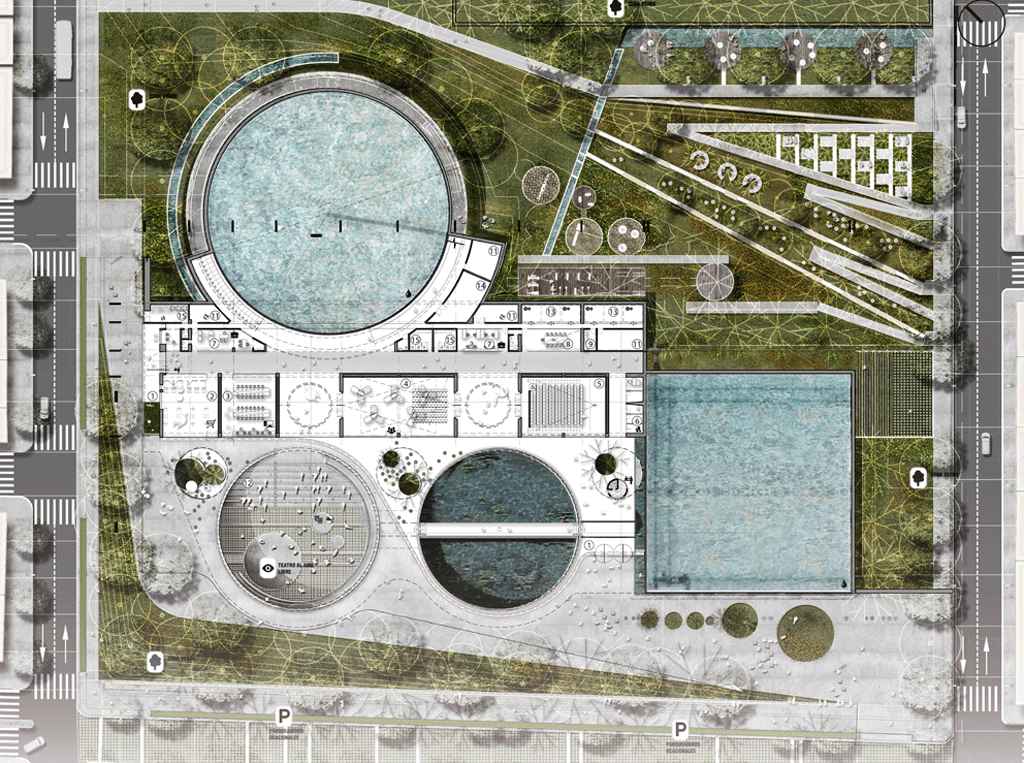 Colectivo720, Articulated Site, Medellin, Colombie, 2014.
Colectivo720, Articulated Site, Medellin, Colombie, 2014.
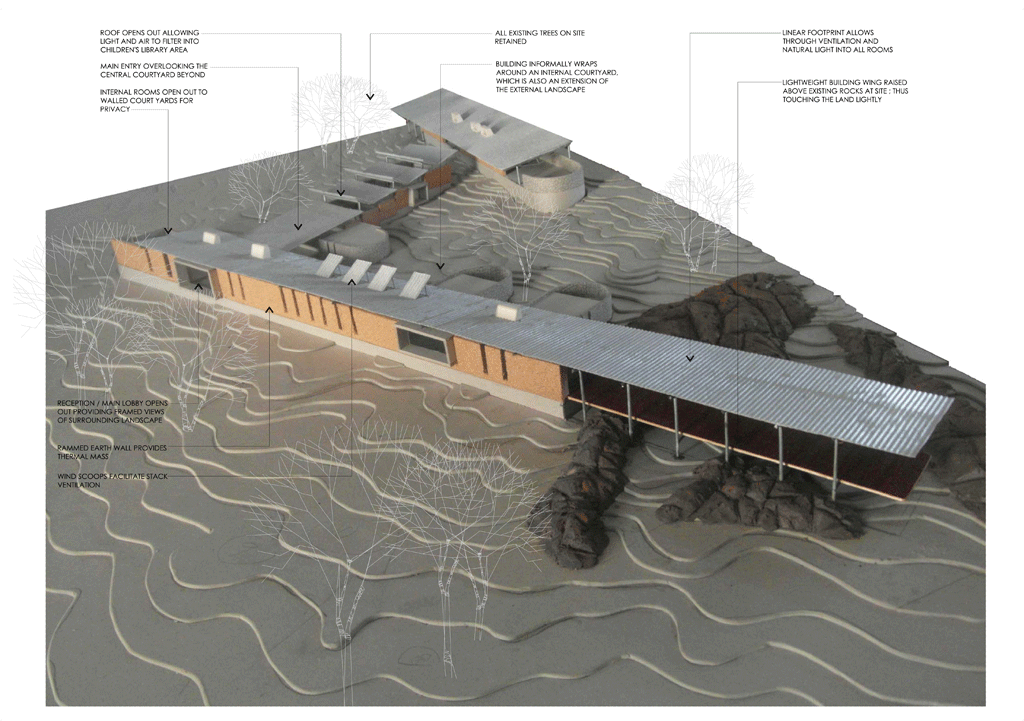 Robust Architecture Workshop, Post War Collective, Ambepussa, Sri Lanka, 2014.
Robust Architecture Workshop, Post War Collective, Ambepussa, Sri Lanka, 2014.
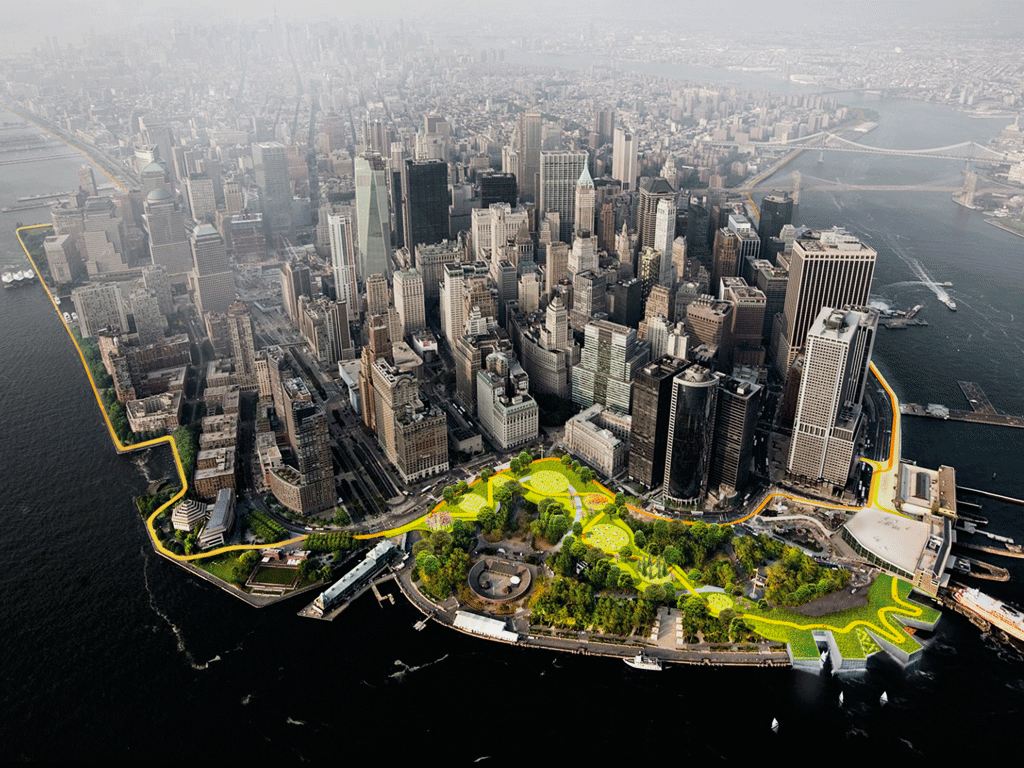 BIG, Rebuilt by Design, New York, États-Unis, 2014.
BIG, Rebuilt by Design, New York, États-Unis, 2014.
Texte original en anglais :
The winner of the Gold in Holcim’s 4th Global Awards for Sustainable Construction feels like a prize for a decade of development which has made Medellin a paradigm of intelligent architectural intervention. The Gold has gone to a scheme to re-make the city’s reservoirs as pubic spaces in some of the city’s poorest neighbourhoods as accessible public spaces, highlighting the value of water as an asset for civilised living and enhancing the city through communal space. The design by Mario Camargo and Luis Tombé of Colectivo720 in Cali, together with Juan Calle and Horacio Valencia of EPM Group of Empresas Públicas de Medellín is modest but the ideas about the future of the city are ambitious and imbued with humanity. The Silver has gone to a less visible but also architecturally modest design for a community library in Ambepussa near Colombo, Sri Lanka aimed at ex-soldiers returning from a civil war without skills and without a tangible future. Its social agenda is tied into its architecture as the construction of the building itself in rammed earth and recycled and sustainable local materials becomes part of the training and reintegration process. The design by Milinda Pathiraja and Ganga Ratnayake of Robust Architecture Workshop in Colombo is sophisticated and self-effacing. Finally the Bronze Award goes to one of architecture’s biggest noises – Bjarke Ingels’ BIG. It is a typically brash and eye-catching proposal for New York City’s flood defences which does what BIG does so well – co-opting the huge spending on infrastructure to introduce public amenity – in this case a waterside park and network of new public spaces surrounding Lower Manhattan. Ambitious, intelligent and, in its way slyly subversive, it addresses New York’s historical problem with the lack of development in infrastructure in a joyfully provocative proposal. •
—
Par Edwin Heathcote

